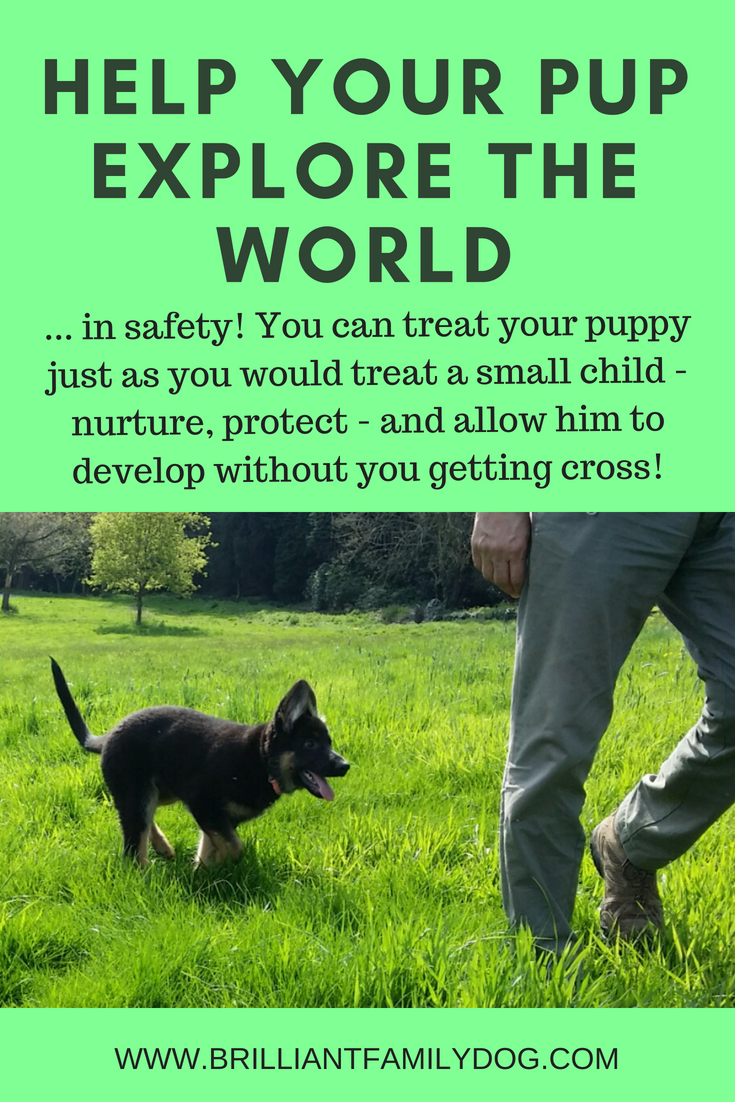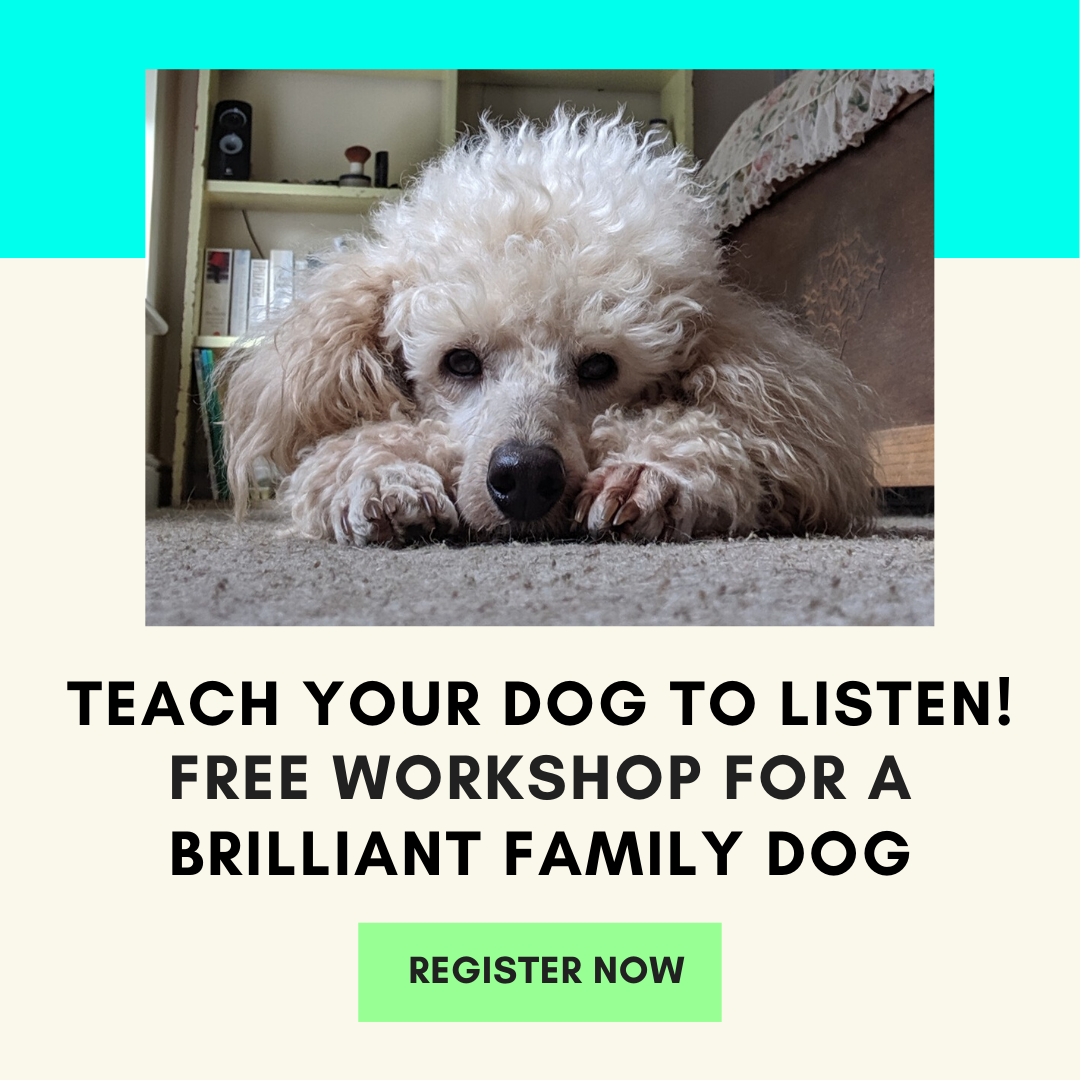I wish I'd known this trick for my first few dogs! Crate training is the answer to caring for a new puppy. It keeps him out of harm’s way – from overexcited children, older dogs, clumsy feet, jealous cat, car wheels – and all the hazards a tiny puppy can meet.
And then, when you're ready to give him your attention, out he comes: to play, interact with children and other household pets, to eat, and – Importantly! – to relieve himself.
Chewing, too …
Crate training is the answer to unwanted puppy chewing too. If you leave him in his crate when you go out, then the only thing he can chew are his bones and chew-toys, so when you come back there can be a blissful reunion unmarred by the horrors of discovering your dining room table with a gnawed leg, the computer cables chewed right through, or your favourite jumper loved to death.
To acclimatise your pup to his crate is simple: just bring him home and put him in it! He’s a baby, he’ll fit in with what you want, don’t worry. The less fuss you make about this the easier it is.
Teaching an older dog to enjoy his crate takes a little more time, but if you encourage him slowly and gradually with treats, feed all his meals there (without at first shutting the door on him) he will soon cheerfully go there of his own accord, knowing this is his own den.
I would choose a wire crate that will fit your puppy for the next six months to a year. You don’t want something massive. The smaller the crate the easier it’ll be to manoeuvre. The best crates are lightweight tough mesh with a metal pan. They fold up for transporting - really useful for travel - and are very easy to clean.
You can get crates tailor-made for your car too. This is essential for transporting your puppy safely – and legally. A dog loose in the car is considered “an unsecured load” and can cause much damage to other occupants of the car (as well as himself) in the event of an accident. And a secure and comfy cage means there is never a danger of your dog jumping out of the car onto a busy road.
Make it cosy
I line the base of the house crate with newspaper or a blanket, and fill the whole crate with comfy machine washable bedding. And if you have a tunnelling, thin-coated dog like a Whippet, she’ll think she’s in a cold prison cell if you don’t provide plenty of cuddly bedding!
A puppy who has come from a conscientious breeder will be unlikely to soil his bedding. See this video of very young puppies learning to eliminate away from their sleeping area:
Position the crate in a corner of the room, so the puppy is sheltered on two sides – from drafts as well as traffic – but he'll be able to see everything that goes on, so he’ll feel secure and included when you need to set about your chores. However, most of his time in the crate he’ll be asleep, so being able to close the door on the room with the crate in is very useful to ensure the correct amount of sleep.
To begin with a young pup will spend all his sleeping time in the crate. If he's happy there during the day, there's a good chance he’ll be happy there overnight. He may need to relieve himself once during the night to start with, so get up and take him outside on a lead – no playtime – and then pop him back into bed again. Get my Cheatsheet for Errorless Housetraining and focus on what you have to do to make this fast and easy. You’ll be surprised how quickly it will work for you!
At night, have the crate in your bedroom, maybe partly covered with a blanket for warmth and cosiness. Your puppy is much more like to settle quietly if he doesn't feel abandoned.
Of course you'll be taking him out on the lead to the garden during the day - every time he wakes, after each meal, after an active play session, and at least once an hour. Never scold him for doing it in the wrong place – regard it as a management problem and resolve to be more proactive next time. Before long you can add your vocal cue – you could say "hurry up" or "busy" or "be clean" or whatever you like (that you don't mind saying out loud in public for the next 12 years!).
The natural method
As this method of crate training is totally without pressure – simply building on the dog’s natural desire to keep his nest clean – you can start very young. In fact I had my very quickest housetraining results with a pup I had from four weeks (his mother was sick). By the age of six weeks this little puppy was clean and dry by night. Not long after that he would go outside and relieve himself on cue.
I would expect a puppy normally to be reliable between nine and fourteen weeks. The smaller the dog the longer it may take, though not necessarily - it’s really up to you! The beauty of crate training is that it does the work for you.
An added advantage of early crate training
At some stage in his life your dog may need surgery or confinement after an injury. Imagine the stress of trying to introduce him to a crate at this time! On top of that, he’ll go easily into the crate at the vets, thereby minimising stress.
It’s so useful to be able to park the dog contentedly in his crate when he comes home from an operation. He’ll feel secure from being trodden on and can switch off and relax, and concentrate on getting better.
But is crate training cruel?
I have found people may have misgivings about using a crate for a puppy at first – but these fears are usually dispelled when they find out what crate training is actually about.
We're not talking about shutting a puppy away and neglecting him – far from it! Crate training gives you the chance to build a great relationship with your puppy very quickly. After all you never need to tell him off for anything!
What better way to start off a lifelong partnership?
Check out New Puppy! the only puppy book you will need to get you step-by-step through the early weeks!
Check other post that might help your brilliant dogs:
I have a new puppy: will I ever get any sleep again?
How much time does your dog spend sleeping?




















